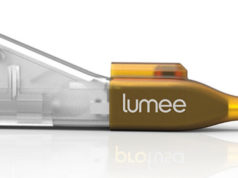 Profusa has announced promising clinical data from two studies evaluating the company’s Lumee Oxygen Platform, a tiny, injectable tissue-integrated biosensor and an intelligent data platform intended for continuous, real-time monitoring of tissue oxygen levels. The data, presented at the Leipzig Interventional Course (LINC; 22–25 January, Leipzig, Germany), indicate that the Lumee platform measures tissue oxygen level changes in both healthy volunteers and patients with critical limb ischaemia (CLI).
Profusa has announced promising clinical data from two studies evaluating the company’s Lumee Oxygen Platform, a tiny, injectable tissue-integrated biosensor and an intelligent data platform intended for continuous, real-time monitoring of tissue oxygen levels. The data, presented at the Leipzig Interventional Course (LINC; 22–25 January, Leipzig, Germany), indicate that the Lumee platform measures tissue oxygen level changes in both healthy volunteers and patients with critical limb ischaemia (CLI).
The Lumee oxygen platform received CE mark in October 2016 for continuous monitoring of tissue oxygen. The platform is CE Marked for sale in the EU for monitoring tissue-oxygen perfusion as a general indication. In the US, the Lumee oxygen platform is an Investigational Device limited by Federal Law to Investigational Use.
Measuring Changes in Tissue Oxygen
Peter Schneider, vascular surgeon and clinical researcher in limb salvage vascular procedures from Honolulu, USA presented the findings from a healthy volunteer feasibility study, which evaluated the performance of the Lumee oxygen platform in vivo to monitor changes in interstitial tissue oxygen compared to transcutaneous oximetry (tcpO2), demonstrating that the Lumee platform detected changes in tissue oxygen levels.
“Measurements of regional tissue oxygen serve as a proxy to monitor local perfusion and have the potential to guide crucial therapeutic decisions in multiple clinical disciplines for peripheral artery disease, or peripheral arterial disease (PAD), and wound management, that are now made on the basis of clinical judgement and experience alone without guidance,” says Schneider. “These findings presented at LINC show promise that the Lumee oxygen platform can become a valuable tool for clinicians when they need to assess perfusion.”
In the study, after the Lumee biosensor was injected in the forearm of seven healthy volunteers, vascular occlusion tests were performed on the arms of enrolled volunteers and simultaneous measurements of oxygen were recorded using both the Lumee platform and tcpO2, (a commonly used noninvasive technique that measures the oxygen level of tissue below the skin), with repeated tests occurring one to 10 weeks after biosensor injection. Results revealed that the Lumee platform and tcpO2 were highly correlated, with both technologies showing a statistically significant decrease in oxygen levels during occlusion (Interruption of blood flow by pressure cuff) (p<0.001 for each device). Data also revealed that the Lumee platform detected faster rates of oxygen change during both the occlusion and recovery phases (p<0.001, Wilcoxon signed-rank test) and detected reactive hyperemia (increased blood flow) in a higher percentage of tests (38% versus 4% occlusion tests).
OMNIA Subset Analysis
Marianne Brodmann, interim head of the clinical division of angiology, department of internal medicine at Medical University in Graz, Austria presented findings from an interim analysis of the first 30 patients enrolled in the Oxygen Monitoring Near Ischemic Areas Study (OMNIA). The findings demonstrate that in patients with CLI, tissue oxygen level increases measured with the Lumee platform during revascularisation were positively correlated with changes compared to toe brachial index (TBI) and were significantly higher in patients who showed wound healing as compared to patients that did not.
“We are pleased to see that continuous monitoring of extravascular tissue oxygen using the Lumee oxygen platform showed a positive correlation to TBI, demonstrating that this technology could be useful to help guide clinical choices during CLI management,” said Brodmann. “These data also validate previous research that showed increases in oxygen during revascularisation may be a sensitive indicator of wound healing following the procedure.”
The OMNIA Study is an ongoing multicentre trial evaluating use cases of the Lumee oxygen platform. Preliminary analysis assesses the relationship between oxygen levels, traditional haemodynamics (blood flow) and wound healing in the affected limbs of patients with CLI before, during and one day after revascularisation using the Lumee platform, with follow-up visits around 30, 90, 180 and 365 days. Enrolled patients received four injected Lumee biosensors; three in the foot and one as a reference sensor in the arm.












